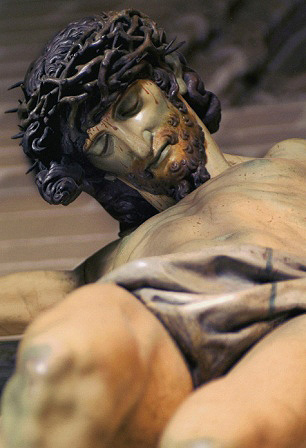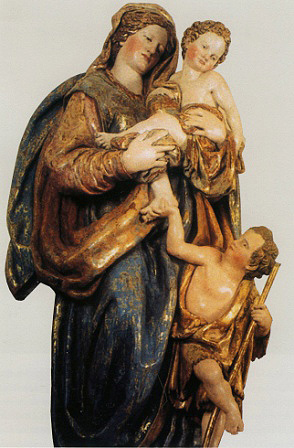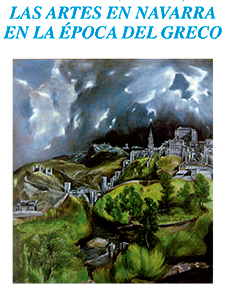AROUND THE 4TH CENTENARY OF EL GRECO (1541-1614). THE ARTS IN NAVARRA IN THE AGE OF EL GRECO
September 4, 2013
Juan de Anchieta: a genius of sculpture
Mrs. María Concepción García Gainza. Chair of Heritage and Art of Navarre.
The life and work of Juan de Anchieta (Azpeitia 1538 - Pamplona 1588) can be explained in the social, religious and artistic context of the time in which he lived, the time of Philip II. His training took place in the artistic scene Spanish since his apprenticeship letter was signature in Valladolid on October 25, 1551, between the image maker Antonio Martínez, from Medina de Rioseco, and his brother Miguel de Anchieta, who appears as tutor. Once he finished his apprenticeship and became an official, he became acquainted with the successors of Alonso Berruguete and approached the great French sculptor Juan de Juni. As an itinerant sculptor he moved from Valladolid to Astorga and from there to Briviesca where he made the excellent sculpture of the main altarpiece of the Santa Clara monastery that would bring him great fame, to finally move to the Basque Country to marry Ana de Aguirre and settle in Azpeitia.
The first years of the seventies were spent between the Basque Country and Aragon, where he carried out important works in alabaster and stone in the Seo of Zaragoza - altarpiece of the Zaporta chapel - and in the cathedral of Jaca where he carved the altarpiece of the Trinity of the Sarasa chapel. Finally in 1576 he settled in Pamplona, capital of the kingdom and seat of the diocese, where he opened a workshop in the Navarrería and served the artistic market of a wide area formed by Navarre, the Basque Country, Aragon, Burgos and La Rioja. Pamplona became his center of operations and Navarre his adopted land, where he died in 1588 and was buried in the cloister of the cathedral.

Juan de Anchieta, Crucifixion
Pamplona Cathedral
A religious sculptor, he knew how to give form to the sacred images that the church demanded of him. In spite of his artisan training , typical of his time, Juan de Anchieta sample had the extraordinary abilities of an artist, a sculptor who knew how to dominate the subject and extract expressive figures finished with great figure and finish. He was also an expert tracista of altarpieces for his mastery of classical orders and proportions and his altarpieces -Cáseda and Santa María de Tafalla among others- offer an elaboration staff of models of Gaspar Becerra with loans from the Italian treatise writer Sebastiano Serlio. He mastered the art of the nude as a good Renaissance sculptor, having as model Michelangelo in whose types he was repeatedly inspired. His crucifixes of the cathedral of Pamplona and Santa Maria de Tafalla are good sample to what extent the beauty of the human body can express religious feelings. It was precisely Juan de Anchieta who introduced in his area of activity this tendency, the miguelangelismo or romanismo, which the documentation of the time calls "the art of the new".

Juan de Anchieta, Virgin and Child with Saint John
Parish Church of San Juan Bautista de Obanos
PROGRAM
Tuesday, 3rd September
El Greco on his 4th Centenary
Ana Carmen Lavín Berdonces. Director of the El Greco Museum
El Greco and Toledo
Ms. Ana Carmen Lavín Berdonces. Director of the El Greco Museum
Wednesday, 4th September
Of patrons and artists
D. Ricardo Fernández Gracia. Chair of Heritage and Art of Navarre
Juan de Anchieta: a genius of sculpture
Ms. María Concepción García Gainza. Chair of Navarrese Heritage and Art
Thursday, 5th September
Rolan Mois and the beginnings of Counter-Reformation painting in Navarre
Mr. Jesús Criado Mainar. University of Zaragoza
The silversmith Velázquez de Medrano and micro-architecture in silver
D. Ignacio Miguéliz Valcarlos. UNED Pamplona

